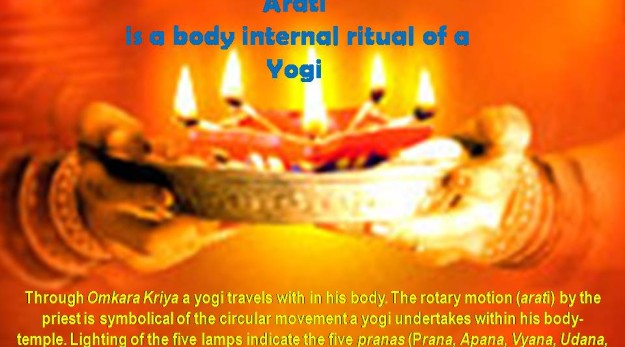Through Omkara Kriya a yogi travels with in his body.
The rotary motion (arati) by the priest is symbolical of the circular movement a yogi undertakes within his body-temple. The deity is fanned either bye a peacock feather (representing the Kutastha-Eye) or a fly-whisk or an ordinary hand-fan. This fanning indicates the serene and calm state a yogi arrives at after practising austere sadhana.
Lighting of the five lamps indicate the five pranas (Prana, Apana, Vyana, Udana, Samana). The fire of the lamps denote the pervasion of body-heat.
During arati different external musical instruments like the conch-shell, tabor, drum, dish of bell-metal etc. are all used symbolizing the ten intra-sounds a yogi hears (Chirr (ci), contineous chirr (ci ci), small bell (Kshudva ghanta), conch (samkha), lute (vin), rhythm (tal), snake-charmer’s flute (murli), wooden tom-tom (pakhoaj), concerted drum music (naghabat), prolonged bell (dirgha-ghanta)) while practising Omkara Kriya. Also, yogi can hear omkara or pranava dhani or sound from within which is a deep oum. When this holy sound evolves from within the last syllable keeps on ringing in the bass pitch then it declines, again recurs with the deep rich sound. It never stops. This occurs to a yogi when prana vibration arrives at a declension. It is a mellifluous sound effecting peace and serenity within.
The use of incense sticks and flowers during arati infer the internal fragrance and internal beauty respectively a yogi perceives within. When a yogi is rapt with intra-sounds, intra-fragrance, intra-beauty; external sounds, fragrances or beauty bear no importance to him.
Thus all these external rituals are a symbol of the internal ritual a yogi performs within his body.

